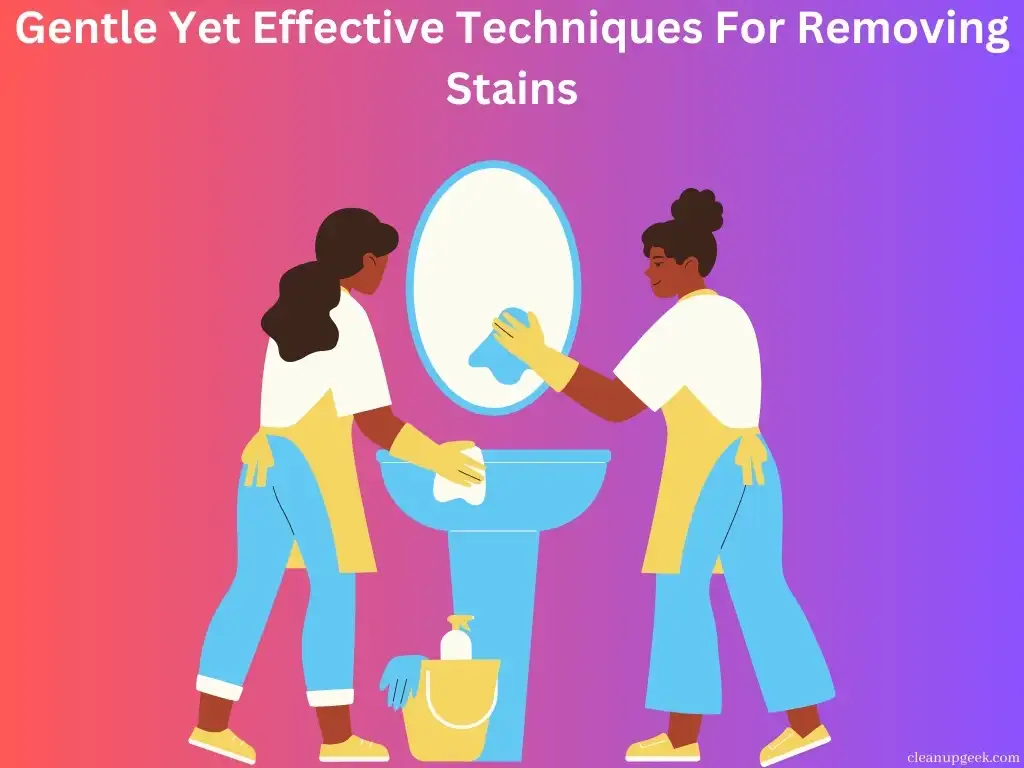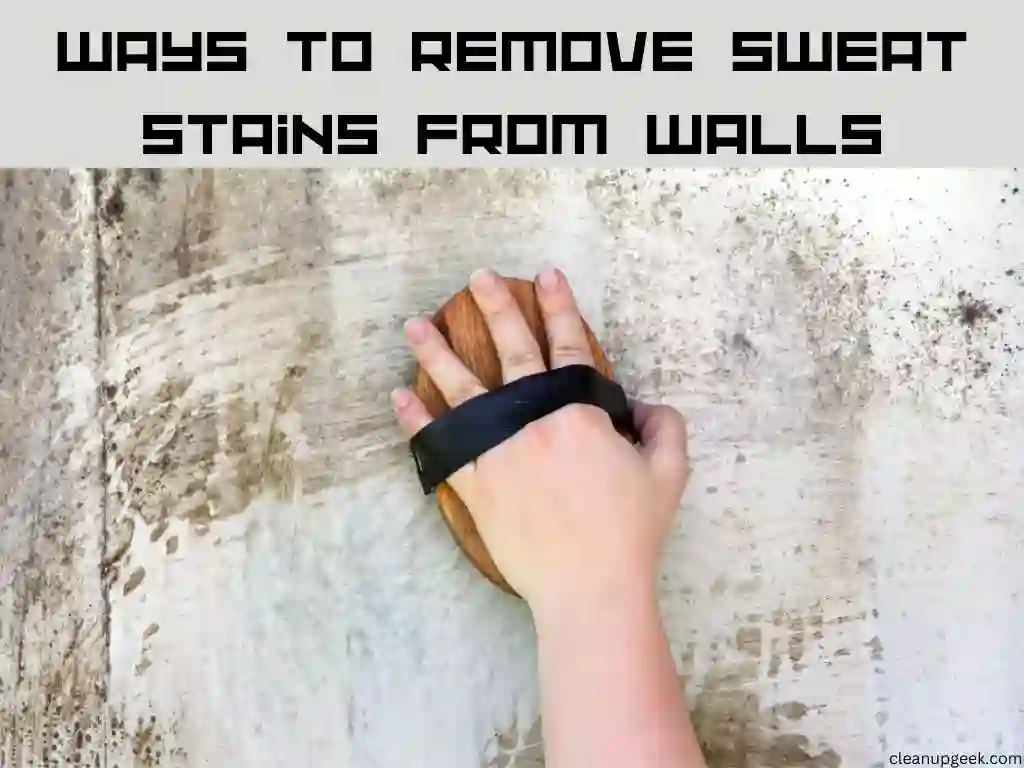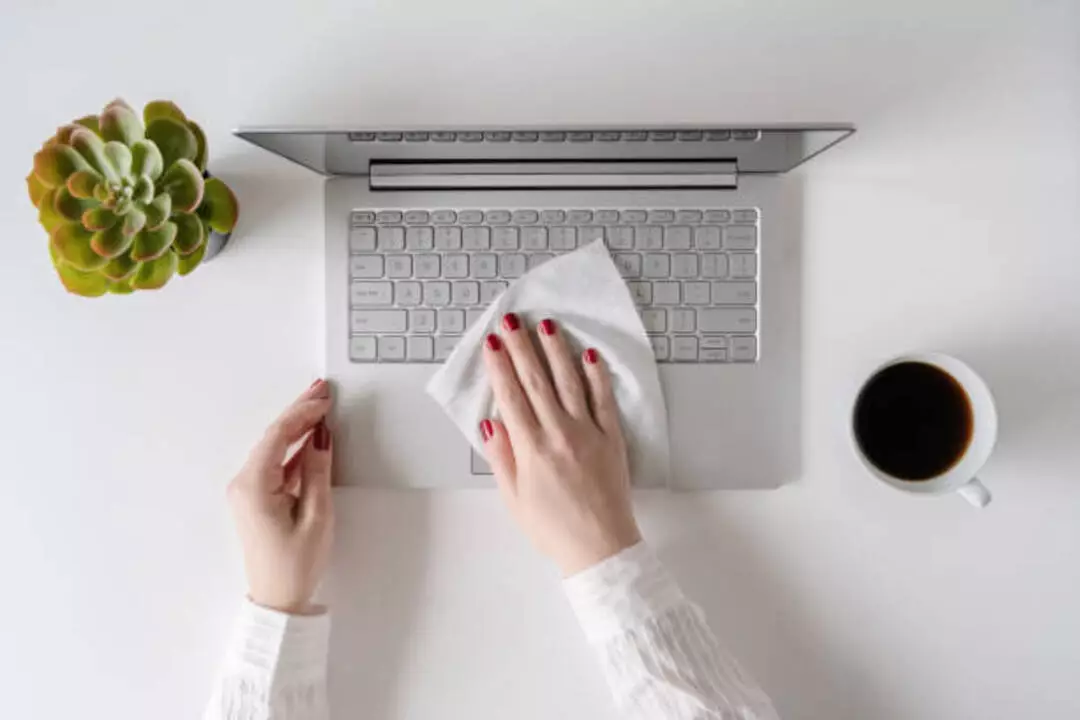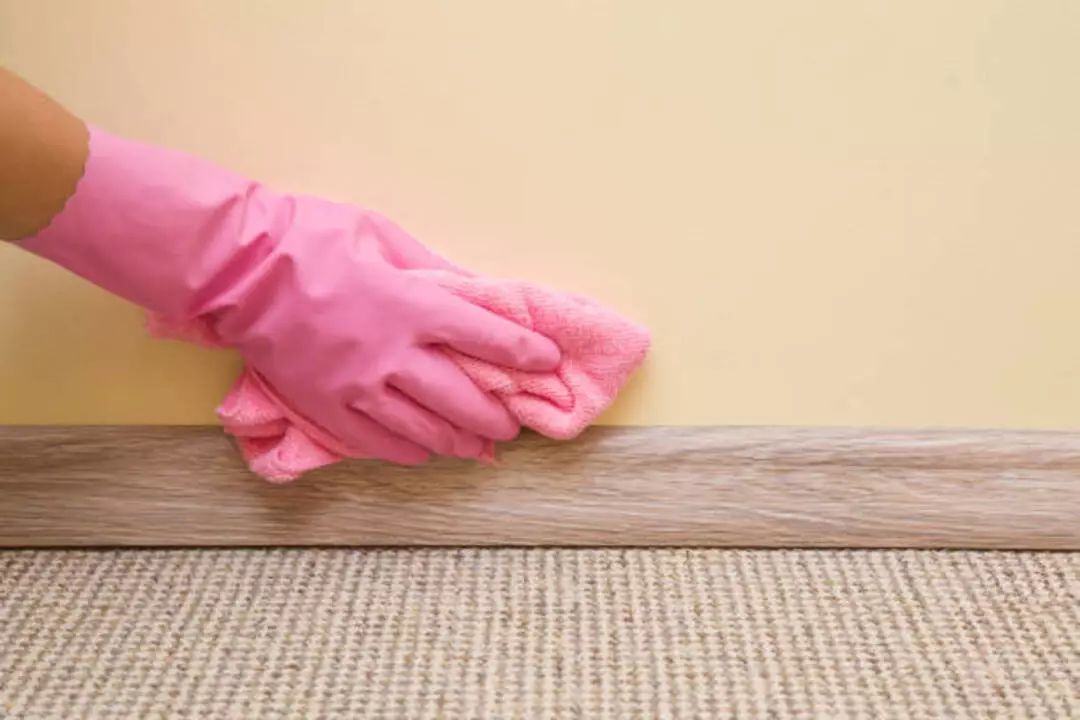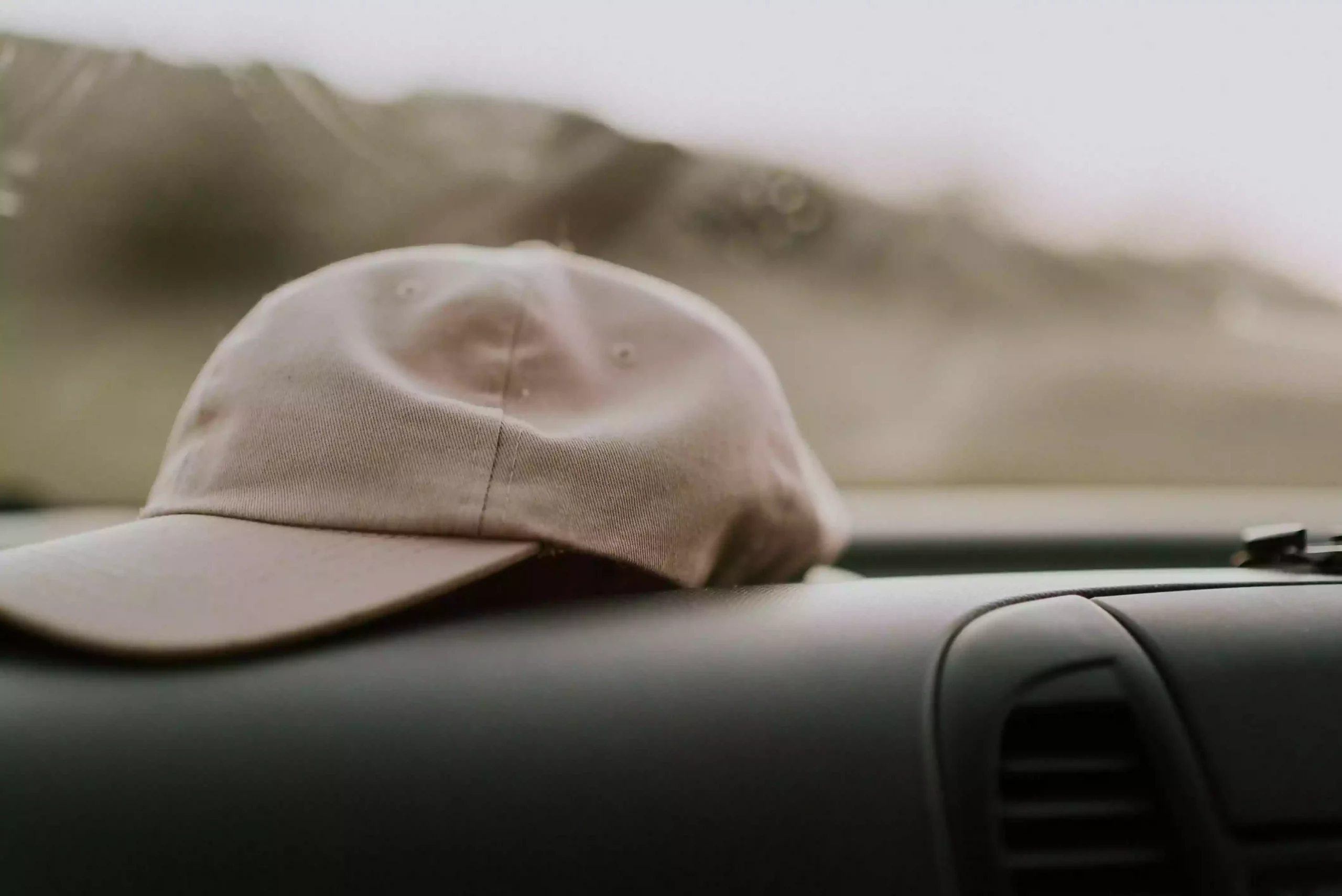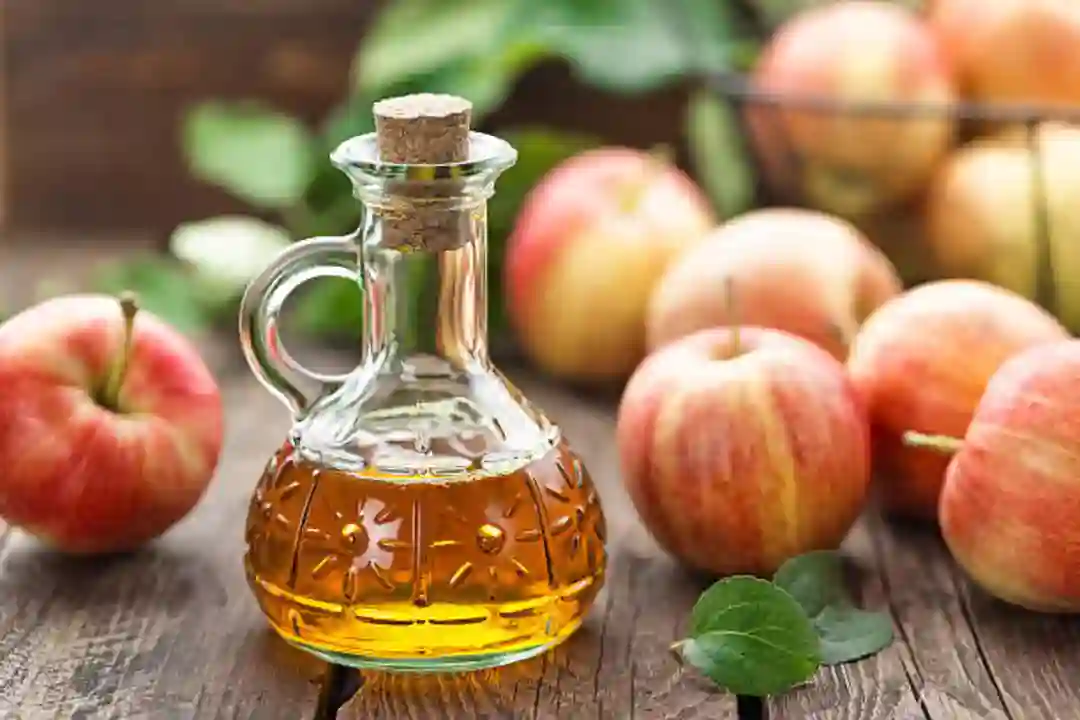Stains on your favorite clothes can be a real headache. But did you know gentle methods often work best to lift these pesky spots without damaging fabrics?
This article dives into gentle yet effective techniques for removing stains from your garments and home textiles.
Keep reading for some smart cleaning magic!
KEY INFORMATION
- Act fast when you get stained. The sooner you treat it, the better your chances are of getting it out.
- Use cold water to rinse stains like blood, dairy, and deodorant. Hot water can set them apart and make them harder to remove.
- For greasy stains like oils or mayonnaise, dish soap can help break down the oil so you can wash it away.
- Gentle rubbing with detergent or household products like vinegar helps lift many types of stains without damaging fabric.
- Always check clothing labels before treating stains to use the right method for that fabric type.
Types of Stains and How to Remove Them
Watch this tutorial
Title: How To Get Almost Every Kind Of Stain Out Of Your Clothes
BY: Rachael Ray Show
From adhesives to wine, there are various types of stains that can be tough to remove. We’ll explore effective techniques for removing these stubborn stains and getting your fabrics looking as good as new.
1. Adhesives
Sticky stuff like glue or tape can leave a mess on clothes and other surfaces. To tackle these adhesives, reach for some common household items. Oil-based products, such as cooking oils or peanut butter, work great to loosen the hold of adhesives on fabrics.
Rub the oil gently onto the sticky area and let it sit for a few minutes. Then use a scraping tool to carefully peel away the residue without harming your fabric.
If traces of adhesive remain, dabbing with rubbing alcohol can help lift what’s left. It breaks down the stickiness quickly, so you can wipe it off with ease. Be sure to wash the item thoroughly after treating it to remove any last bits of adhesive along with the oil or alcohol you’ve used.
This method helps ensure your fabrics stay clean and free from unwanted sticky spots.
2. Beverages
Remove beverage stains by acting fast. Blot the stain with a clean cloth or paper towel to soak up as much of the spilled liquid as possible. Rinse the fabric from the back with cold water, then apply a gentle detergent directly to the stain and let it sit for a few minutes before washing as usual.
For stubborn coffee or tea stains, try a mix of white vinegar and water before washing. Additionally, avoid using hot water when treating fruit stains, stains as it can set in the stain further.
Remember! Gentle rubbing and blotting is key to preventing beverages from becoming permanent on fabrics like clothing or upholstery.
3. Blood
Start by pretreating the blood stain with a liquid detergent and gently brushing it with a clean toothbrush. This helps break down the enzymes in the stain, making it easier to remove.
After pretreating, wash the fabric using heavy-duty laundry detergent or a commercial stain remover according to the care label instructions. For tougher stains, enzymatic cleaners can also be effective at breaking down protein-based stains like blood.
Remember that warm water may set blood stains on some fabrics, so always use cold water when treating them.
For tough dried-in bloodstains, a mixture of water and vinegar can be used as a natural pre-soak before washing. Soaking the stained area for about 30 minutes can help loosen up dried blood for easier removal during regular washing.
4. Bodily fluids
When dealing with bodily fluid stains, it’s crucial to act promptly. For fresh stains, blot the area with a clean cloth to absorb as much liquid as possible. Then, rinse the fabric under cold water before applying a pre-treatment solution of hydrogen peroxide or enzyme-based detergent to break down proteins in the stain.
For older bodily fluid stains, start by scraping off any dried residue using a blunt knife or spoon. Next, soak the stained garment in a mixture of cold water and enzyme-based detergent for at least 30 minutes before laundering as usual.
Avoid using warm or hot water on these stains as heat can set them further into the fabric fibers.
5. Candle wax
To remove candle wax from the fabric, start by scraping off excess wax using a blunt knife or spoon. Place a clean paper towel over the wax and press with a warm iron to transfer the wax onto the paper towel.
Apply a small amount of stain remover or liquid detergent to the affected area, then launder as usual. For delicate fabrics, like silk or wool, place them in the freezer until the wax hardens and becomes brittle, then gently scrape it off with a dull edge.
For stubborn residual stains on hard surfaces like wood or countertops, use an ice pack to freeze the remaining wax before gently chipping it away with a plastic scraper. Once most of it is gone, apply some mild dish soap mixed with warm water and wipe down the surface thoroughly.
6. Chocolate
To remove chocolate stains, gently scrape off any excess with a butter knife or spoon. Then, flush the stained area with cold water to help dilute and loosen the chocolate. After flushing, rub liquid laundry detergent or dish soap onto the stain and let it sit for a few minutes before rinsing thoroughly.
If the stain persists, apply a stain remover and launder as usual using heavy-duty laundry detergent to effectively eliminate the chocolate mark from your clothing.
Remember that home remedies such as using white vinegar can also be effective in breaking down chocolate stains. Just mix one tablespoon of white vinegar with a two-thirds cup of water and dab it onto the affected area before laundering as usual.
7. Collar/cuff soil
When dealing with collar and cuff soil, consider pretreating the affected areas with a small amount of heavy-duty laundry detergent or dish soap. Gently rub the detergent into the stained fabric using a clean toothbrush to help break down the dirt and oils.
For stubborn stains, allow the detergent to sit on the fabric for a few minutes before laundering as usual. Remember that using too much force when scrubbing can damage delicate fabrics, so it’s best to be gentle yet thorough in removing collar and cuff soil.
8. Coffee/tea
When dealing with coffee or tea stains on fabric, it’s essential to act promptly. Blot the stain gently with a clean cloth or paper towel to absorb as much of the liquid as possible.
Avoid rubbing, as this can spread the stain further into the fabric. For light-colored fabrics, you can create a solution using equal parts vinegar and water to dab onto the stain before washing.
Alternatively, for darker fabrics, try applying a mixture of water and liquid dish soap directly onto the stained area before laundering.
Hydrogen peroxide is also an effective option for removing coffee or tea stains from white clothing. Simply saturate the stained area with hydrogen peroxide and let it sit for a few minutes before rinsing with cold water and laundering as usual.
9. Cosmetics/lipstick
To remove lipstick or cosmetics stains from clothing, start by scraping off any excess residue with a blunt knife or spoon. Then, blot the stain with a clean cloth dipped in rubbing alcohol to lift as much of the color as possible.
Next, apply a prewash stain remover directly onto the affected area and let it sit for at least 10 minutes before laundering as usual. For delicate fabrics, consider using a gentle dish soap instead of rubbing alcohol to prevent damage.
Additionally, if the fabric is safe for bleach, mix oxygen bleach with water to form a paste and gently rub it into the stained area before washing.
10. Crayon
Removing crayon stains from fabric can be tricky, but it’s not impossible. Start by scraping off excess crayon wax with a butter knife or spoon. Then, place the stained area between clean paper towels and press with a warm iron to transfer the remaining wax onto the paper towels.
After that, pretreat the stain with liquid laundry detergent or dish soap before washing in hot water. If the stain persists after washing, don’t dry the garment; instead, repeat the process until the crayon stain is completely removed.
Using an ice cube on fresh stains can also help harden and solidify the crayon wax for easier removal. For colored fabrics, avoid using hot water as it may set in the dye and make it harder to remove the crayon stain effectively.
11. Dairy products
When dealing with stains caused by dairy products, such as milk or cheese, it’s important to act promptly. Blot the affected area gently to prevent the stain from setting. After blotting, rinse the fabric with cold water to remove as much of the dairy residue as possible.
Then pretreat the stained area with a commercial stain remover or a mixture of liquid detergent and water before laundering.
Dairy stains contain proteins that can bond strongly with fabrics if left untreated. Therefore, it is crucial to avoid using hot water when treating these stains, as heat can cause protein-based stains to set in further.
12. Deodorants
Deodorant stains can be tricky to remove from clothing. The aluminum compounds in deodorants can react with sweat, causing yellow stains that are tough to get rid of. To tackle these stains, try pre-treating the affected area with a mixture of water and vinegar before washing.
You can also use a mild enzyme-based laundry detergent or a paste made from baking soda and water to help lift the stubborn deodorant marks. Remember to check the care label on your garment for any special instructions before attempting stain removal.
13. Dye transfer
If you notice dye transfer from one garment to another, act quickly. Separate the affected clothing and rinse it in cold water. Gently rub some heavy-duty laundry detergent onto the stains, then wash the fabric in the hottest water safe for it.
Once washed, check if the stains are gone before drying. If they remain, repeat the process or use a commercial stain remover to treat any lingering marks. Remember not to place stained clothes in the dryer as heat can set dye stains permanently.
14. Fabric softener
Fabric softener can leave greasy stains on clothes, especially if used excessively. Apply a small amount of dish soap or laundry detergent directly to the stain and gently rub it in.
Let it sit for 5-10 minutes before washing as usual to remove the fabric softener residue from your clothes effectively.
If left untreated, fabric softener stains can be tough to remove. To avoid these stains altogether, use fabric softener sparingly and follow the recommended usage instructions on the product label.
15. Fruit and juices
To remove fruit and juice stains, start by scraping off any excess pulp or residue with a dull knife. Then, flush the stain with cold water to prevent it from setting. Apply a liquid laundry detergent directly onto the stain, gently rubbing it in with your fingers.
Let it sit for 5-10 minutes before rinsing thoroughly. If the stain persists, mix equal parts of white vinegar and water and soak the garment for 15-30 minutes before washing as usual.
For tougher juice stains like grape or cherry juice, apply hydrogen peroxide to the affected area and let it sit for a few minutes before rinsing and laundering.
16. Grass
Grass stains are tough and stubborn but can be effectively removed with the right approach. Enzyme-based pre-treatments or liquid detergents are effective in breaking down the proteins present in grass stains.
For tougher stains, using a toothbrush to gently scrub the affected area before washing can help lift the stain from the fabric. Additionally, soaking the stained garment in cold water mixed with enzyme-based detergent or vinegar for at least 30 minutes before laundering can also aid in removing grass stains effectively without damaging the fabric.
Effective methods for removing grass stains
17. Grease and oil
When dealing with grease and oil stains, it’s important to act quickly. Blot the stain with a clean cloth or paper towel to absorb as much of the oil as possible. Avoid rubbing the stain, as this can spread it further into the fabric.
Sprinkle baking soda or cornstarch on the stain to help soak up additional grease before laundering. You can also apply a small amount of dish soap directly onto the stain and gently work it in with your fingers before washing as usual.
For tougher stains on delicate fabrics like silk or wool, consider using a dry cleaning solvent for best results.
18. Ice cream
Ice cream stains can be a sticky mess, but don’t worry, there’s a simple solution. Scrape off any excess ice cream with a spoon or butter knife. Then, rinse the fabric under cold water to flush out as much of the stain as possible.
Gently rub liquid laundry detergent into the stained area before washing it in the hottest water suitable for the fabric. Avoid using warm or hot water initially, as it can set the stain further into the fabric.
For tougher ice cream stains on white fabrics, you can try soaking them in a mixture of cold water and an oxygen-based bleach for about 30 minutes before laundering as usual. However, avoid using chlorine bleach on colored fabrics as it may cause discoloration.
19. Ketchup
To remove ketchup stains, start by scraping off any excess sauce with a spoon or dull knife. Then, flush the stain under cold running water to push it out of the fabric. After that, pretreat the affected area with a liquid detergent or dish soap directly onto the stain.
Gently rub the fabric together to work in the detergent and let it sit for a few minutes before washing as usual. If the stain persists, you can use hydrogen peroxide as an alternative pretreatment solution to break down and lift the remaining pigments from the fabric fibers effectively.
The key to successfully removing ketchup stains is prompt action – acting quickly will prevent deep penetration into fibers and make removal easier. Additionally, always check clothing labels for specific instructions on how best to clean fabrics!
20. Lipstick
Lipstick stains can be tricky, but there are effective ways to remove them. First, gently scrape off any excess lipstick with a dull knife or spoon. Then, apply a small amount of heavy-duty laundry detergent directly onto the stain, and let it sit for a few minutes before rubbing it in gently with your fingers or a soft-bristled brush.
Afterward, wash the garment as usual, using the hottest water temperature safe for the fabric.
For tougher lipstick stains on delicate fabrics like silk or wool, try dabbing some isopropyl alcohol onto the stain using a clean cloth. Blot the area until the lipstick transfers onto the cloth.
21. Maple syrup
To remove maple syrup stains from clothing, start by scraping off any excess syrup using a dull knife or spoon. Then, flush the back of the stain with cold water to push out as much of the syrup as possible.
After that, pretreat the stained area with a liquid laundry detergent before laundering. For tougher stains, you can use a commercial stain remover to effectively break down the sticky residue.
Always check the care label on your garment before attempting any stain removal process to ensure it is safe for the fabric type.
Removing maple syrup stains can be achieved through simple yet effective techniques like scraping off excess syrup, flushing with cold water, pretreating with detergent, and potentially using a commercial stain remover if needed.
22. Mayonnaise
For mayonnaise stains, start by scraping off any excess with a dull knife. Then, blot the stain with a cloth dipped in warm water and dish soap. After that, wash the fabric at the highest temperature safe for the material using heavy-duty laundry detergent to remove any remaining residue.
Mayonnaise is an oil-based stain, so it’s crucial to avoid hot water as it can set the stain further into the fabric. Applying cold water or ice to solidify and scrape off excess mayonnaise helps prevent the spreading of the stain before laundering.
Additionally, always air dry afterward to avoid setting any remaining traces of the oil-based stain from heat exposure.
23. Mildew
To remove mildew stains from clothes, start by brushing off any loose spores or growth on the fabric. Then, pretreat the affected area with a mixture of water and vinegar to help kill and loosen the mildew.
After letting it sit for a few minutes, wash the garment with heavy-duty laundry detergent using hot water if care instructions allow. For stubborn mildew stains, consider using bleach as a last resort but ensure to follow clothing care instructions and do a spot test first to avoid damaging the fabric.
Applying these simple yet effective techniques can help you tackle mildew stains on your clothes, keeping them fresh and clean for everyday use. Remember to thoroughly dry washed items in sunlight as ultraviolet rays have natural disinfectant properties that can further aid in removing residual mildew stains.
24. Mustard
Mustard stains can be tricky to remove because of their vibrant color and oily texture. To effectively address a mustard stain, start by scraping off any excess mustard with a dull knife or spoon.
Then, blot the stained area with a cloth dampened in cold water and apply liquid detergent directly onto the stain. Gently rub the fabric together to work the detergent into the fibers before washing it in the hottest water safe for the fabric, using heavy-duty laundry detergent.
Avoid using hot water initially as it can set in the stain further. If traces of the mustard stain persist after washing, repeat this process before air-drying to prevent setting any remaining marks.
25. Nail polish
When dealing with a nail polish stain on fabric, act quickly. First, scrape off excess polish using a dull knife. Then, place the stained area facedown on clean paper towels and apply acetone or nail polish remover from the back of the fabric to push the stain out.
Blot frequently until no more polish transfers onto the paper towels.
If any color remains after treating with acetone, mix one tablespoon of ammonia with two cups of warm water and sponge the stain with this solution. Rinse thoroughly afterward to remove all traces of ammonia.
26. Paint
To remove paint stains, first, scrape off excess paint with a dull knife. Then, apply a small amount of turpentine or paint thinner to the stain and gently blot with a clean cloth.
Next, wash the fabric in hot water using heavy-duty laundry detergent to completely remove the remaining residue. For tougher oil-based paints, use mineral spirits before washing as usual.
Always test any solvent on a small hidden area of the fabric beforehand to check for colorfastness and potential damage.
For delicate fabrics like silk or wool, take extra care by using mild dish soap diluted with water before dabbing the stain lightly. Avoid rubbing vigorously to prevent damaging the fibers.
When dealing with dried acrylic or latex paint stains on hard surfaces such as wood or concrete floors, use warm soapy water combined with gentle scrubbing to eliminate them effectively without causing harm.
27. Perfume
When dealing with a perfume stain on clothing, act quickly to blot the excess liquid. Apply a small amount of heavy-duty laundry detergent or dish soap directly onto the stain and gently rub it in.
Let it sit for a few minutes before rinsing thoroughly with cold water and repeating if necessary. Avoid using hot water as it can further set the stain. Once treated, wash the garment as usual according to the care label instructions.
For delicate fabrics that cannot be washed in regular machines, such as silk or wool, consider taking them to a professional cleaner promptly to address the perfume stain. It’s essential to communicate about the specific stain so that proper treatment can be applied without damaging the fabric.
28. Perspiration
Perspiration stains can be tough to remove, but with the right techniques, you can keep your clothes looking fresh. Enzymatic stain removers or a mixture of water and vinegar are effective for breaking down sweat stains on fabrics.
Gently rubbing the stained area before washing can help lift off perspiration marks without damaging the fabric. Be sure to check the garment care label and test any new cleaning method on a small, hidden area first to avoid potential damage.
Regularly treating and washing perspiration-stained clothing will help maintain their quality and appearance over time.
29. Pine resin
Pine resin stains can be challenging to remove, especially from clothing. First, gently scrape off any excess resin with a dull knife or spoon. Then, apply a small amount of rubbing alcohol onto the stain and let it sit for a few minutes before blotting it with a clean cloth.
Repeat this process until the stain is no longer visible. Alternatively, you can use a commercial pine tar remover following the manufacturer’s instructions for best results.
Using natural techniques like white vinegar or baking soda can also effectively break down pine resin stains. Mix equal parts of vinegar and water and dab it onto the stain before rinsing with warm water.
For stubborn stains, make a paste using baking soda and water and apply it directly to the affected area before laundering as usual.
30. Scorch
When a fabric gets scorched, it can leave a tough, unsightly stain that seems impossible to remove. In such cases, using white vinegar or lemon juice can help lighten the scorch mark.
Create a solution with equal parts of water and either vinegar or lemon juice, then apply it directly onto the scorch mark. Blot the area with a clean cloth until the stain starts to fade.
This gentle technique is effective for treating scorch stains on various types of fabrics without causing any further damage.
31. Shoe polish
To remove shoe polish stains, start by scraping off any excess polish using a spoon or dull knife. Then flush the stained area with dry cleaning solvent or a carpet cleaner. If the stain remains, pretreat it with a liquid detergent and gently brush the fabric with a clean toothbrush.
Finally, launder the item as usual to completely remove the shoe polish stain. For delicate fabrics like silk or wool, consult a professional cleaner before attempting to remove the stain at home.
Remember that heavy-duty laundry detergent can effectively treat tough shoe polish stains on most machine-washable fabrics. Additionally, understanding how different fabrics react to specific stain removal methods is crucial for successfully removing shoe polish from clothes and maintaining their quality.
32. Soft drink
Soft drink stains on clothes can be difficult to remove. Act fast and blot the stain with a clean cloth or paper towel, avoiding rubbing as it may spread the stain. Rinse the area with cold water to flush out as much of the stain as possible before applying a pre-wash stain remover or regular detergent directly onto the affected area.
Let it sit for at least five minutes before laundering as usual, using heavy-duty laundry detergent if needed. Remember, don’t use hot water or throw it in the dryer until you’re confident that the soft drink stain is completely gone from your clothing.
33. Tar or tree sap
To remove tar or tree sap from clothes, place the clothing in the freezer for a few hours. Once frozen, carefully scrape off as much of the hardened sap or tar as possible using a dull knife or spoon.
Then apply a small amount of stain remover directly to the affected area and wash in warm water with heavy-duty laundry detergent. For any remaining residue, dab with isopropyl rubbing alcohol and rinse thoroughly before washing again.
Tar and tree sap stains can be stubborn, but by using these steps combined with a good stain remover or rubbing alcohol, you can effectively get rid of these challenging stains from your clothes without damaging the fabric.
34. Tobacco
Tobacco stains can be stubborn to remove from clothes. If the stain is fresh, start by dabbing it with a paper towel or clean cloth to absorb excess moisture. Then, pre-treat the stain with a mix of liquid detergent and water, and gently scrub the area with a soft-bristled brush.
After that, wash the garment in the hottest water suitable for its fabric type. For older tobacco stains, apply a stain remover directly onto the affected area before washing. Air-dry afterward to check if the stain has completely disappeared before tumble drying.
In the case of tough tobacco stains on delicate fabrics like silk or wool, avoid rubbing vigorously as this can damage the fabric fibers. Instead, consider seeking professional dry cleaning services for safe and effective removal without causing any harm to the material.
35. Wine
Wine stains can be tricky to remove from clothing, especially if they set in. Act fast by blotting the stain with a clean cloth or paper towel to soak up as much wine as possible. Then, pretreat the area with a mixture of liquid laundry detergent and cold water before washing it in the hottest water safe for the fabric.
If there’s still a trace of the stain after washing, use hydrogen peroxide to dab at it before laundering it again. This method is gentle but effective at removing stubborn wine stains from your clothes without damaging the fabric.
36. Wood stain
To effectively remove wood stains from clothing, start by scraping off any excess stain using a dull knife or spoon. Then, apply a small amount of heavy-duty laundry detergent directly onto the stained area and gently rub it in with your fingers.
After letting it sit for a few minutes to penetrate the fabric, wash the garment in the hottest water temperature safe for the fabric type. Additionally, if the stain persists after washing, consider applying a commercial stain remover before laundering again.
Understanding how different types of stains can affect fabrics is crucial in knowing which specific techniques and products to use for effective removal. For wood stains specifically, acting quickly and using appropriate cleaning agents can help prevent permanent damage to clothing while maintaining its quality and appearance.
General Stain Removal Tips
Watch this tutorial
Title: How To Get Almost Every Kind Of Stain Out Of Your Clothes
BY: Rachael Ray Show
Brushing and scraping can help to remove surface stains while presoaking and flushing with water can be effective for more stubborn ones. Remember to always test any stain removal method on a small, hidden area of the fabric first.
1. Brushing
When dealing with dried stains like mud, brushing is a gentle yet effective technique. It helps loosen the dried particles and prepare the stain for further treatment. For enzymatic stains such as blood, pretreating with a liquid detergent and gently brushing with a clean toothbrush can effectively aid in stain removal.
Brushing also aids in breaking down chemical bonds between the fabric and the stain when coupled with appropriate cleaning agents or solvents. Additionally, for tough food, protein, or oil stains on clothes made of sturdy fabrics like denim or shirts, gentle to vigorous rubbing and agitation under running water alongside brushing can help dislodge stubborn spots.
By understanding different types of stains and using appropriate techniques like brushing as part of spot treatment methods at home, you can preserve your clothing’s quality and appearance.
2. Flushing
When dealing with fresh stains, flushing the affected area with cold water can help remove the stain before it sets. This gentle method can be effective for removing substances like blood or food spills from clothing.
By rinsing the stain immediately and gently rubbing the fabric together, you can prevent the substance from embedding deeper into the fabric fibers. Flushing with cold water also helps to dilute and loosen the stain, making it easier to treat using other stain removal techniques if needed.
For tougher stains like coffee or wine, flushing with cold water is still a good initial step before applying specialized treatments. It’s important to act quickly and avoid using hot water as it can set some types of stains further into the fabric.
3. Pretreating
Pretreating stains is an important step before washing clothes. For tough stains like blood, a liquid detergent and a clean toothbrush can help break down the stain’s enzymes. For set-in stains, using heavy-duty laundry detergent or commercial stain remover and letting it sit for some time before washing can effectively lift the stain.
Different types of stains may require different pretreatment methods to ensure effective removal and maintain the quality of your clothes.
Understanding how to pretreat specific stains based on their type can make a significant difference in removing them successfully. From enzymatic stains like blood to stubborn set-in ones, knowing which pretreatment method will work best for each type of stain is essential for achieving clean and spotless clothing.
4. Presoaking
Soak stained clothes in a mixture of water and laundry detergent. This helps to break down the stains before washing. For tough or set-in stains, add a tablespoon of white vinegar to the soaking solution for extra effectiveness.
After presoaking, you can proceed with regular laundering using your preferred wash cycle and detergent.
Presoaking is beneficial for loosening stubborn stains before laundering.
5. Scraping
Scraping is a useful technique for removing solid or semi-solid stains, like wax or gum, from fabrics. First, freeze the stained fabric to harden the stain. Then, carefully scrape off as much of the residue as possible using a dull knife or spoon.
Next, pretreat with a cleaning solution and wash as usual to remove any remaining traces of the stain. This method can be effective in tackling tough and stubborn stains that seem impossible to remove at first.
Gentle yet firm scraping helps in lifting away the bulk of the stain before further treatment.
6. Freezing
Freezing is a smart trick to deal with gum or candle wax stains on clothes. First, harden the gum or wax by placing the garment in a plastic bag and then into the freezer for about 30 minutes.
After freezing, gently scrape off the hardened residue using a dull knife. For remaining bits, blot with a dry-cleaning solvent or rubbing alcohol before washing as usual.
Additionally, freezing can be effective for removing chocolate and other sticky stains from fabrics like silk and wool. Place an ice pack or some ice cubes in a plastic bag over the stained area to freeze it.
Once frozen, carefully scrape off any excess solid residue with a spoon or blunt edge of a butter knife without damaging the fabric.
7. Sponging
To remove stains by sponging, gently dab the stained area with a clean white cloth or sponge dipped in a solution of water and mild detergent. Start from the outer edges of the stain and work towards the center to prevent spreading.
Avoid rubbing vigorously as it can damage delicate fabrics or push the stain deeper into the material. If dealing with stubborn stains like wine, blood, or ink, use an enzyme-based cleaner specifically formulated for that type of stain.
For delicate fabrics such as silk or wool, test a small inconspicuous area first to ensure that sponging does not cause any discoloration or damage.
8. Tamping
Gently tamping a stained area can help the cleaning solution penetrate deeper into the fabric, effectively loosening and lifting the stain. This technique is particularly useful for set-in stains or stubborn spots that are hard to remove with just soaking or rubbing.
By lightly pressing and lifting with a clean cloth or sponge, you can work the cleaning solution into the fabric without causing damage while making it easier to lift away the stain.
Tamping works well for various types of stains, from food and beverages to oils and dyes, providing a gentle yet effective approach to treating and removing them from different fabrics.
Tamping allows for careful treatment of delicate fabrics without aggressive scrubbing, reducing the risk of damaging fibers while efficiently tackling tough stains. This method ensures that even deeply embedded stains can be effectively addressed by allowing the cleaning solution to thoroughly penetrate through layers of fabric.
Natural and Homemade Stain Removal Solutions

Discover effective natural and homemade solutions like water, vinegar, and hydrogen peroxide that are gentle on fabrics yet powerful in removing tough stains. Learn how to utilize these common household items for eco-friendly and wallet-friendly stain removal.
1. Water
Water is a gentle and versatile stain removal agent that can effectively dilute stains and prevent them from settling into fabrics. It’s essential for flushing out fresh stains before they become more challenging to remove.
When combined with other cleaning methods, water can help break down the chemical bonds between the stain and fabric, making it easier to lift off tough stains like ink or sauce. Using cold water for rinsing clothes with different types of stains is vital as hot water can actually set some stains further.
Keep in mind that using excessive force when applying water to a stain might spread the stain molecules onto a larger area of the fabric surface, making it harder to remove. Instead, gently dab or blot the stained area with a clean cloth or paper towel soaked in cool water.
2. Vinegar
Vinegar is a natural and effective stain remover. It works well on stains like coffee, tea, and wine due to its acidic properties. Mixing vinegar with water can create a pre-soak solution for treating tough stains before washing.
For mildew or grass stains, applying undiluted vinegar directly onto the affected area can help break down the stains before laundering. Additionally, soaking fabrics in a mixture of vinegar and baking soda can lift stubborn odors and stains from clothing.
Vinegar also acts as a natural fabric softener when added to the rinse cycle during laundry. This helps to maintain the quality of fabrics while removing any lingering residue from detergents or hard water.
3. Hydrogen peroxide
Hydrogen peroxide is a powerful natural stain remover that is particularly effective on organic stains like blood, wine, and sweat. It works by breaking down the chemical bonds of the stains and lifting them from the fabric.
To use hydrogen peroxide for stain removal, simply dab it onto the stained area using a clean cloth or cotton ball. Let it sit for a few minutes before rinsing with cold water. For tougher stains, you can mix hydrogen peroxide with dish soap or baking soda to create a paste and apply it to the affected area before rinsing.
You should be cautious when using hydrogen peroxide on colored fabrics as it may cause fading or discoloration. Always test in an inconspicuous area first to ensure it won’t damage the fabric.
Stain Removal Techniques for Different Types of Fabrics
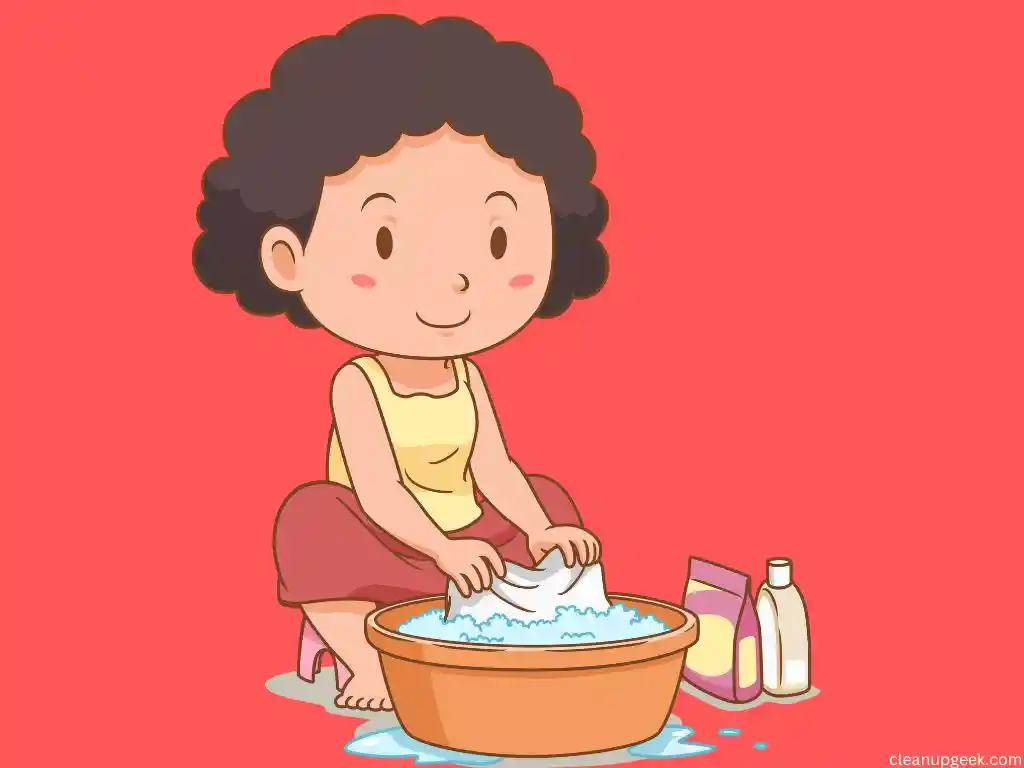
Whether it’s machine-washable fabrics, delicate fabrics, upholstery, carpets, or hard surfaces, there are specific stain removal techniques for each type of fabric. Read on to learn more about effective stain-removal techniques for different types of fabrics!
1. Machine-washables
For machine-washable fabrics, it’s important to treat stains promptly before they set in. Always check the care label for specific instructions and recommendations from the manufacturer.
Soaking stained garments in a mixture of water and detergent can help loosen tough stains before washing. Additionally, pre-treating stains with a stain remover or liquid detergent can improve the effectiveness of the wash cycle in removing stubborn marks.
It’s essential to sort your laundry by color and fabric type to prevent colors from bleeding onto lighter items or delicate fabrics from being damaged during the wash. Always follow the recommended temperature settings on your clothing labels when using hot or cold water to remove stains effectively without causing damage.
2. Delicate fabrics
When dealing with delicate fabrics, it’s crucial to be extra gentle while removing stains. Delicate fabrics like silk, lace, and wool require special care to ensure they aren’t damaged during the stain-removal process.
It’s advisable to avoid vigorous rubbing or scrubbing as this can lead to fabric distortion or damage. Instead, opt for blotting the stain gently using a clean cloth or sponge to absorb the stain without spreading it further on the fabric surface.
Additionally, always test any stain removal method on a small inconspicuous area of the delicate fabric before proceeding with treating the entire stained area.
3. Upholstery
When dealing with stains on upholstery, it’s essential to act promptly using the correct stain removal technique for the specific type of stain. For water-safe upholstery, gently blotting the stain and then applying a mild detergent solution may effectively remove common stains like juice or coffee.
It’s important to test any cleaning solution in an inconspicuous area first. For delicate fabrics like silk or wool, professional cleaning may be necessary to avoid damage. Remember that different types of stains require different methods for effective removal from upholstery.
4. Carpets
When dealing with carpet stains, it’s important to act quickly for effective removal. Blot the stain gently with a clean cloth or paper towel to soak up as much of the spill as possible.
Avoid rubbing, as this can push the stain deeper into the fibers. For oily or greasy stains, sprinkle baking soda on the affected area and let it sit for 15 minutes before vacuuming it up.
For tougher stains like wine or coffee, mix white vinegar with water and gently blot the stain until it lifts. Always test any cleaning solution in an inconspicuous area first to ensure compatibility with your carpet’s material.
5. Hard surfaces
Hard surfaces like countertops, tables, and floors can also fall victim to stains. Spills from beverages, greasy foods, or sauces can leave noticeable marks. To remove these stains, first blot up any excess liquid using a clean cloth or paper towel.
Then use a gentle cleaning solution like dish soap and warm water to scrub the area gently. For tougher stains, a mixture of baking soda and water can be effective in lifting the stain before wiping it away with a damp cloth.
Remember to avoid abrasive cleaners that could scratch surfaces.
Additionally, for stubborn stains on hard surfaces such as ink or dye transfer, rubbing alcohol can be an effective solution for lifting the stain off the surface without causing damage.
Conclusion and final thoughts
In conclusion, knowing how to remove a variety of stains gently and effectively is essential for maintaining the quality and appearance of your clothing. By understanding different stain removal techniques for various fabrics, you can keep your clothes looking clean and fresh.
Whether it’s using natural remedies or commercial stain removers, these tips and guidelines will help you tackle tough stains with confidence. Remember, prevention is key, so always act promptly when tackling stains to achieve the best results.
With the right knowledge and techniques, keeping your clothes free from stubborn stains can be easily achieved.
FAQs

1. What are some gentle yet effective ways to get rid of stains?
Using natural stain removers and following laundry tips for spot cleaning helps gently remove common stains from different fabrics without harsh chemicals.
2. How can I take out oil and grease from my clothes?
You can remove oil and grease stains by applying baking soda before washing or using dish soap on the spot, which breaks down the grease.
3. Is it possible to clean tomato sauce off of fabric?
Yes, you can lift tomato sauce stains by soaking the stained area in cold water with a mild detergent, and then wash as usual.
4. What should I do if ink gets on my shirt?
Quickly blotting the ink stain with a wet cloth and then using rubbing alcohol or hand sanitizer before washing will help take out an ink mark.
5. Can set-in stains still be removed effectively?
To treat set-in stains, soak the garment in warm water with a gentle cleanser, and try treating it several times if needed; persistence often pays off!
